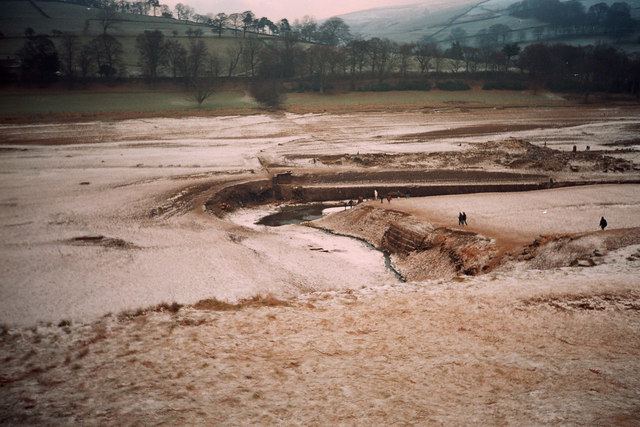Population 51 (2001) Post town Hope Valley | Sovereign state United Kingdom Postcode district S33 Local time Tuesday 5:57 AM Dialling code 01433 | |
 | ||
Weather 3°C, Wind W at 21 km/h, 93% Humidity Points of interest Ladybower Reservoir, Derwent Edge, Ladybower Wood | ||
Derwent is a village 'drowned' under the Ladybower Reservoir in Derbyshire, England. The village of Ashopton, Derwent Woodlands church and Derwent Hall were also 'drowned' in the construction of the reservoir. There is no formal memorial to any of the villages. However, the site of the construction workers' temporary village when the higher Derwent and Howden Reservoirs were built is clearly marked by a plaque. The only marker of the location of Derwent is the village's War Memorial which stands above Ladybower Reservoir at a point to the west of the village.
Contents
Map of Derwent, UK
The most significant surviving reminder of Derwent Village is the village's packhorse bridge, painted in 1925 by the artist Stanley Royle. This originally spanned the River Derwent near the main gates of Derwent Hall, and was removed stone by stone as it had been designated a monument of national importance. The bridge was transported and rebuilt at the head of Howden Reservoir at Slippery Stones where it now forms part of the paths and cycle tracks around the Derwent Valley reservoirs.
The church held its last service on 17 March 1943. The bell from the church may still be heard in Derbyshire, however, since it was re-hung in St Philip's Church in Chaddesden, built in 1955. Bodies from the graveyard had been exhumed in 1940 and were reburied in the village of Bamford. All buildings in the village had been demolished by autumn 1943, and the impounded waters of the reservoir began to rise by the end of 1944. The church spire was left intact to form a memorial to Derwent. However, it was dynamited on 15 December 1947, on the rationale of safety concerns. The site of the village has been revealed when the reservoir levels fell dramatically in 1976, 1989, 1996 and 2003.
Despite being flooded, a few houses survive above the waterline, and there remains a civil parish of Derwent. At the time of the 2001 UK census, it had a population of 51. At the 2011 Census the population remained less than 100. Details were included in the civil parish of Aston, Derbyshire.
The Derwent Valley Museum, located on the Derwent Reservoir dam and run privately by Vic Hallam, tells the history of the Derwent valley and of Derwent and Ashopton as well as the tale of RAF Squadron 617 ("The Dam Busters") and its training for Operation Chastise during the Second World War.
